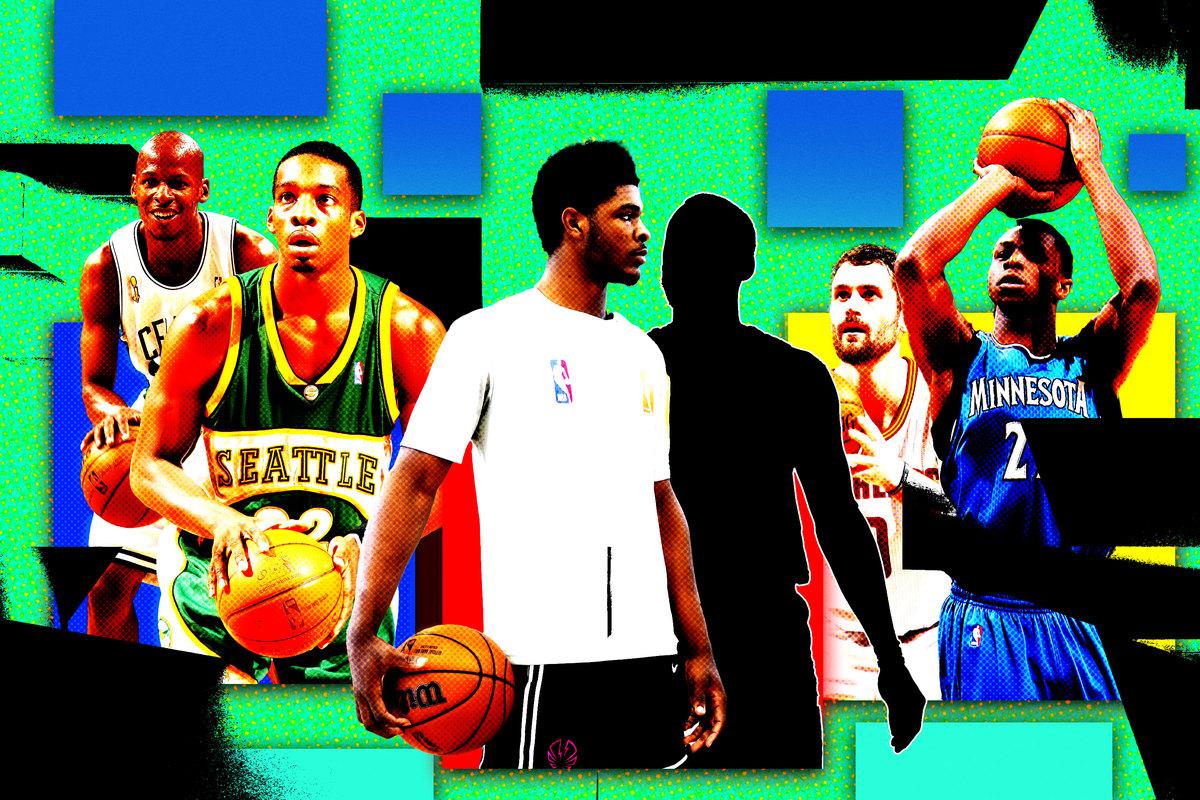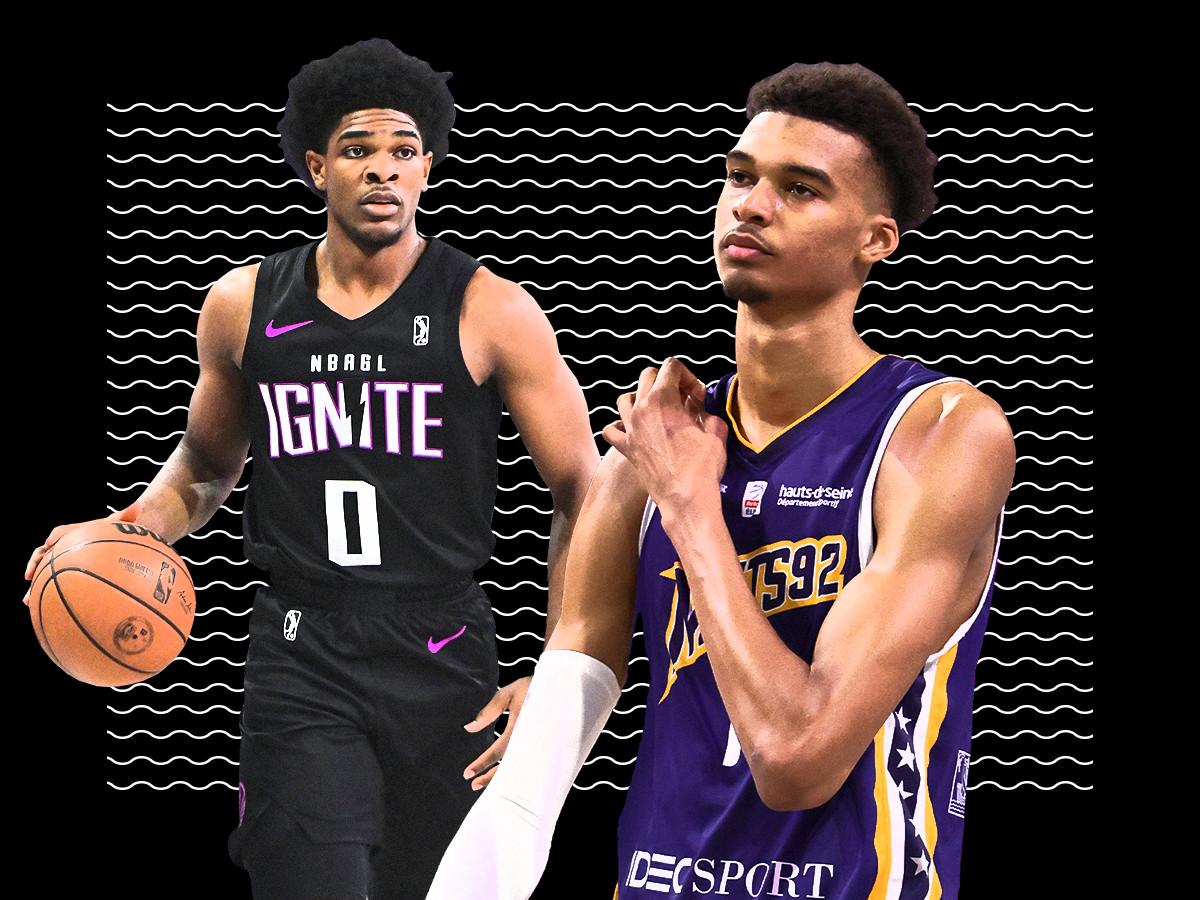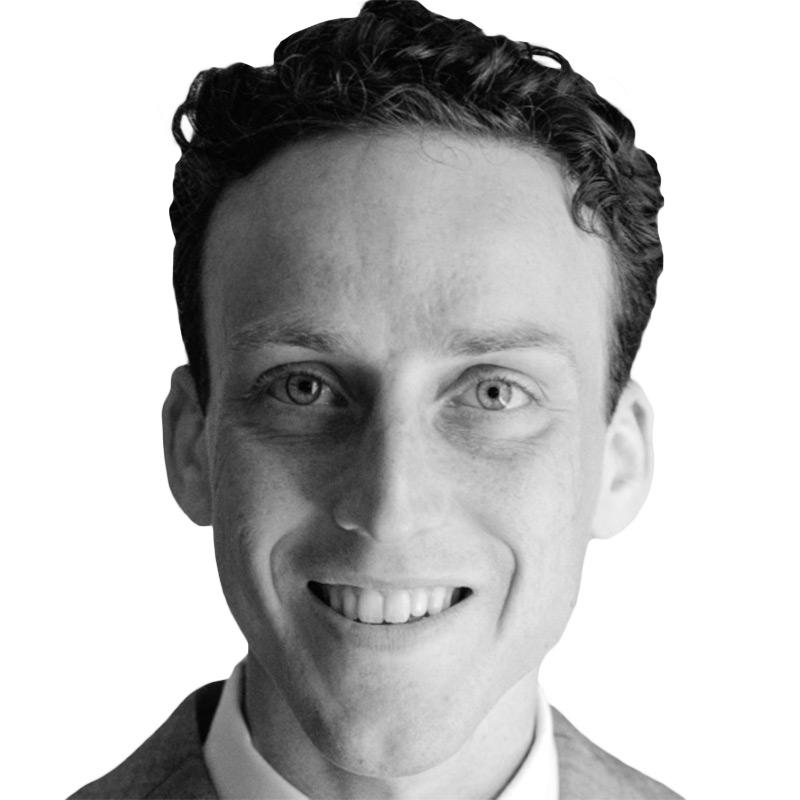What Does History Say Portland Should Do With the No. 3 Pick?
Should the Trail Blazers take Scoot Henderson or Brandon Miller, or trade their pick to maximize Damian Lillard’s prime? To better sort through the 2023 NBA draft’s most interesting dilemma, we examine every deal this century in which a team exchanged a top pick for immediate veteran help.
The most interesting dilemma of the 2023 NBA draft belongs to the Portland Trail Blazers. Most teams’ choices on draft night involve which young player to choose; Portland’s choice is whether to make any selection at all, or to trade the no. 3 pick for a win-now upgrade instead.
That question doesn’t apply to any other team at the top of the draft. The Spurs, Hornets, Rockets, and Pistons were not trying to win last season, slowly building for the future instead. But Portland didn’t take that path, and ended up with the no. 3 pick only because of a brazen late-season tank (for the second year in a row) and lottery luck.
That pick now gives Portland the opportunity to maximize the tail end of Damian Lillard’s prime—if the team doesn’t decide to trade him and rebuild completely. For his own sake, Lillard is still capable of leading a contender. Even at 32 years old, the franchise’s all-time leading scorer averaged a career-high 32 points per game last season, and he led the league in the offensive component of estimated plus-minus, a trusted advanced stat.
Top Players in Offensive Estimated Plus-Minus, 2022-23
But would it be smart for Portland to deal the no. 3 pick to raise its 2023-24 ceiling, given that both Scoot Henderson and Brandon Miller—the most likely candidates to be selected in that spot—project immense upside? An analysis of transaction data from Basketball Reference and Pro Sports Transactions reveals 13 trades this century that exchanged a top-10 pick for immediate veteran help. Let’s sort their outcomes to see what they say about the Trail Blazers’ possible futures, if they strike such a deal.
(Note that this tally doesn’t include pick-for-pick or prospect-for-prospect deals, like Markelle Fultz for Jayson Tatum, nor does it include picks traded months or years before, like when the Nets, incidentally, traded for Gerald Wallace and gave up the pick that eventually begot Lillard. Some deals involved multiple picks and players; we determined the primary motivation for each deal as best we could.)
Tier A: Led to a Championship
- Lakers trade no. 4 pick in 2019 (De’Andre Hunter) for Anthony Davis
- Cavaliers trade no. 1 pick in 2014 (Andrew Wiggins) for Kevin Love
- Celtics trade no. 5 pick in 2007 (Jeff Green) for Ray Allen
Here’s the good news for Portland: These three precedents show that it’s possible to convert a top pick into a chance at a title-winning roster upgrade. Both the Lakers and Celtics won championships the very next season after making these trades, while the Cavaliers reached the Finals in Year 1 and won it all in Year 2.
It’s not as if any of these championship teams were much better positioned before making these trades than Portland is now. The Lakers didn’t make the playoffs in 2019, the Cavaliers in 2014, or the Celtics in 2007. (Naturally—that’s how they landed high lottery picks in the first place.)
But here’s the bad news for Portland: Those championship turnarounds required not just one, but two star additions. The 2019-20 Lakers didn’t just need Davis, but also a healthy LeBron James, who’d played a career-low number of games the previous season. The 2014-15 Cavaliers benefited from LeBron’s return to Cleveland, in addition to Love. And the 2007-08 Celtics brought in Allen and Kevin Garnett together.
And unfortunately for the Trail Blazers, they don’t have the means to acquire two stars this summer. The best they’re likely to do in free agency is re-sign Jerami Grant, who already played for the team that missed the playoffs last season. Anfernee Simons is another possible trade chip, but he’d probably be included in any swap of the no. 3 pick, the same way that Brandon Ingram and Lonzo Ball were also part of the Davis trade, or Anthony Bennett was also part of the Love trade. Shaedon Sharpe is reportedly “off limits” in trade talks this summer.
So, can Portland parlay a pick trade into a Finals run? It’s possible. But because they’d be hard-pressed to follow both steps their potential predecessors took, it’s mighty unlikely.
Tier B: No Championship, but No Regrets Either
- Pelicans trade no. 6 pick in 2013 (Nerlens Noel) for Jrue Holiday
- Rockets trade no. 8 pick in 2006 (Rudy Gay) for Shane Battier
- Wizards trade no. 5 pick in 2004 (Devin Harris) for Antawn Jamison
- Clippers trade no. 2 pick in 2001 (Tyson Chandler) for Elton Brand
Noel, Gay, Harris, and Chandler all developed into solid NBA players; Harris and Chandler were even one-time All-Stars. Chandler enjoyed the highest peak of this quartet: Over a three-season span starting in 2010-11, he won Defensive Player of the Year, was honored with an All-NBA nod, won a title as the Mavericks’ second(?)-best player, and was named to three All-Defensive teams.
And yet, it’s difficult to blame the Clippers for missing out on that production when it occurred a decade after Chandler was drafted. All four of these trades worked out just fine for the teams adding the veteran, even if the prospects they traded turned into high-caliber pros.
Holiday made a pair of All-Defensive teams in New Orleans, helped the franchise to its only playoff series win of the last 15 years (a rare upset sweep of Lillard’s Trail Blazers in 2018), and fetched a giant pick haul when the Pelicans dealt Holiday to Milwaukee in 2020.
Battier was never an All-Star—only, famously, a No-Stats All-Star—but he was a key starter for a number of fun Rockets teams, including one that won a surprising 22 games in a row and another that pushed the eventual champion Lakers to seven games in the conference semifinals.
Jamison was a two-time All-Star in Washington, where he was Gilbert Arenas’s sidekick during the Wizards’ best sustained run of success in decades. (That’s damning with faint praise, but it’s true: The Wizards reached the playoffs four years in a row with Jamison on the roster, which they haven’t done otherwise since the 1980s.)
And Brand averaged a 20-and-10 double-double across a lengthy Clippers tenure, peaking with a seventh-place MVP finish in 2005-06. That season, he led the franchise to its first playoff series win since the Buffalo Braves won a round 30 years earlier.
Would Portland be satisfied with this moderate level of success? For the Pelicans, Wizards, and Clippers, even brief playoff runs represented an improvement over perennial inadequacy. Portland is far too familiar with brief playoff runs at this point, however; the Trail Blazers reached the playoffs every season from 2013-14 through 2020-21, but only reached the conference finals once—and lost in a sweep—during that span. From that perspective, a solid veteran who helps them win a playoff round or two wouldn’t stand out nearly as much.
Because Henderson and Miller are so highly touted, the price for such an upgrade would be even harder for the Trail Blazers to swallow. There’s a massive difference between a good mid-lottery pick like Noel or Gay, and a top-three pick with franchise-changing potential.
Still, this category represents one of the more likely outcomes of a possible Portland trade, especially because of the supporting role the second star they bring in would play next to Lillard. Brand was the Clippers’ leading star, but Holiday supported Davis, Battier supported Yao Ming and Tracy McGrady, and Jamison supported Arenas.
Tier C: Could’ve Been Worse
- Timberwolves trade no. 7 pick in 2017 (Lauri Markkanen) for Jimmy Butler
- Bobcats trade no. 8 pick in 2007 (Brandan Wright) for Jason Richardson
What should we make of the Timberwolves trade for Butler, which seemed like such a steal at the time that our Kevin O’Connor gave the Bulls an F+ grade on draft night? In Butler’s only full season in Minnesota, the Timberwolves snapped a 13-year playoff drought.
But they only snuck in as a no. 8 seed, and lost in a gentleman’s sweep. Then Butler forced his way out of Minnesota early the next season, and the Timberwolves received a relative pittance—Jerryd Bayless, Robert Covington, Dario Saric, and a second-round pick—in return.
All the other moving parts from the trade that brought Butler to Minnesota complicate matters further. The deal also gave the Timberwolves the no. 16 pick in the 2017 draft, but Justin Patton was a bust who played all of one career game for the Timberwolves. Zach LaVine went to Chicago and blossomed into an All-Star, albeit one without any playoff success to date. Markkanen was only a decent NBA player for half a decade until taking a leap with Utah—his third NBA team—last season.
All those cross-currents come out to something of a shrug: The Timberwolves probably aren’t thrilled they swapped the Markkanen pick for Butler, but they shouldn’t be distraught, either. (They should reserve that frustration for the second Butler trade instead.)
The Bobcats trade is simpler to understand: They were bad before Richardson, they were bad with Richardson, and they were bad after Richardson, but they shouldn’t regret trading Wright because he never made an impact on the court. His greatest contribution to Golden State came when he left the team, because when the Warriors traded Wright midway through his rookie contract, they acquired the future second-round pick they used to draft Draymond Green.
Remember: Aside from the no. 1 pick in some years—like Victor Wembanyama in this draft class—there is no such thing as a sure bet in the NBA draft. Sticking with the Warriors, for instance, they surely wish, in retrospect, that they had traded the no. 2 pick in 2020 for a veteran instead of using it to draft James Wiseman.
Tier D: Outright Disaster
- Wizards trade no. 5 pick in 2009 (Ricky Rubio) for Randy Foye and Mike Miller
- Suns trade no. 7 pick in 2004 (Luol Deng) for, essentially, the cap space used to sign Quentin Richardson
- Knicks trade no. 7 pick in 2002 (Nene) for Antonio McDyess
- Hawks trade no. 3 pick in 2001 (Pau Gasol) for Shareef Abdur-Rahim
Injuries and a shaky jumper conspired to prevent Rubio from ever fulfilling the potential he flashed as a teenager playing in Spain, but he still turned into a solid NBA point guard who helped his team for years after the 2009 draft. That’s more than can be said about Foye and Miller, who played for just one season in Washington, during which the Wizards went 26-56. (The Arenas–Javaris Crittenton gun incident didn’t help, but the Wizards were already in free fall, with an 8-17 record at that point.) At least they were so terrible they backed into the no. 1 pick and John Wall.
The Suns’ Deng trade only sort of belongs on this list, because they technically acquired a second-rounder and a future first when they traded his draft rights to Chicago in 2004—but it fits in spirit, because the real reason Phoenix made the deal was owner Robert Sarver’s stinginess. Not having to pay a lottery pick’s rookie salary meant Phoenix could sign Quentin Richardson to a six-year, $48 million contract that offseason.
And while Deng developed into an excellent two-way wing, Richardson spent only a year in Phoenix before Sarver decided to shed his contract, too. And how’d the Suns accomplish that? By attaching his deal to the first-round pick they’d acquired in the Deng trade and trading both for Kurt Thomas, whom the Suns would then trade—along with two more first-round picks—for more salary relief a couple years later. What a disaster. As I wrote a few years ago about the Deng deal, “the Suns effectively traded the no. 7 pick in a strong draft for one season of a worse and more expensive player at the exact same position as the player who went no. 7.”
McDyess’s tenure in New York was about as brief as Richardson’s in Phoenix. The power forward broke his kneecap in a preseason game mere months after joining the Knicks and missed a full season; the Knicks then included him in the Stephon Marbury trade after just 18 games the following year. Meanwhile, Nene developed into an excellent energy guy for roughly the next decade in Denver.
Finally, the Gasol trade is the most painful on this entire list, as the Hawks swapped an unproven big man—at the time, the highest international pick ever—for a proven version, who happened to be a hometown Georgia kid as well. As GM Pete Babcock said at the time, “We could have taken one of those other guys and waited for him to become Shareef. But we thought, ‘Why not take Shareef now?’”
The reason is that Gasol became an even better player. Abdur-Rahim was good in Atlanta, making an All-Star team and averaging 20 points per game across two and a half seasons, but Gasol was great in Memphis and then Los Angeles. Abdur-Rahim’s Hawks teams never won more than 35 games or reached the playoffs; Gasol was the leading scorer on a 50-win team by his third season.
This is the potential, worrisome downside of a Portland trade this week: With an enticing top three players in this draft class, the Trail Blazers might sacrifice the next Gasol—or worse—for a quixotic attempt at contention right now. Instead, they might be better suited to veer in the opposite direction, trading Lillard and trying to build out a new, young, future-oriented core with Simons, Sharpe, and either Henderson or Miller.
With the draft mere days away, Portland faces a fork in its franchise’s direction. As this brief history demonstrates, the range of possible outcomes from a top-pick-for-veteran trade is wide and unpredictable. So, too, are the Trail Blazers’ options as the week unfolds.


:format(webp)/cdn.vox-cdn.com/uploads/chorus_image/image/72351244/OfferSheetRankings_Getty_Ringer.0.jpg)
